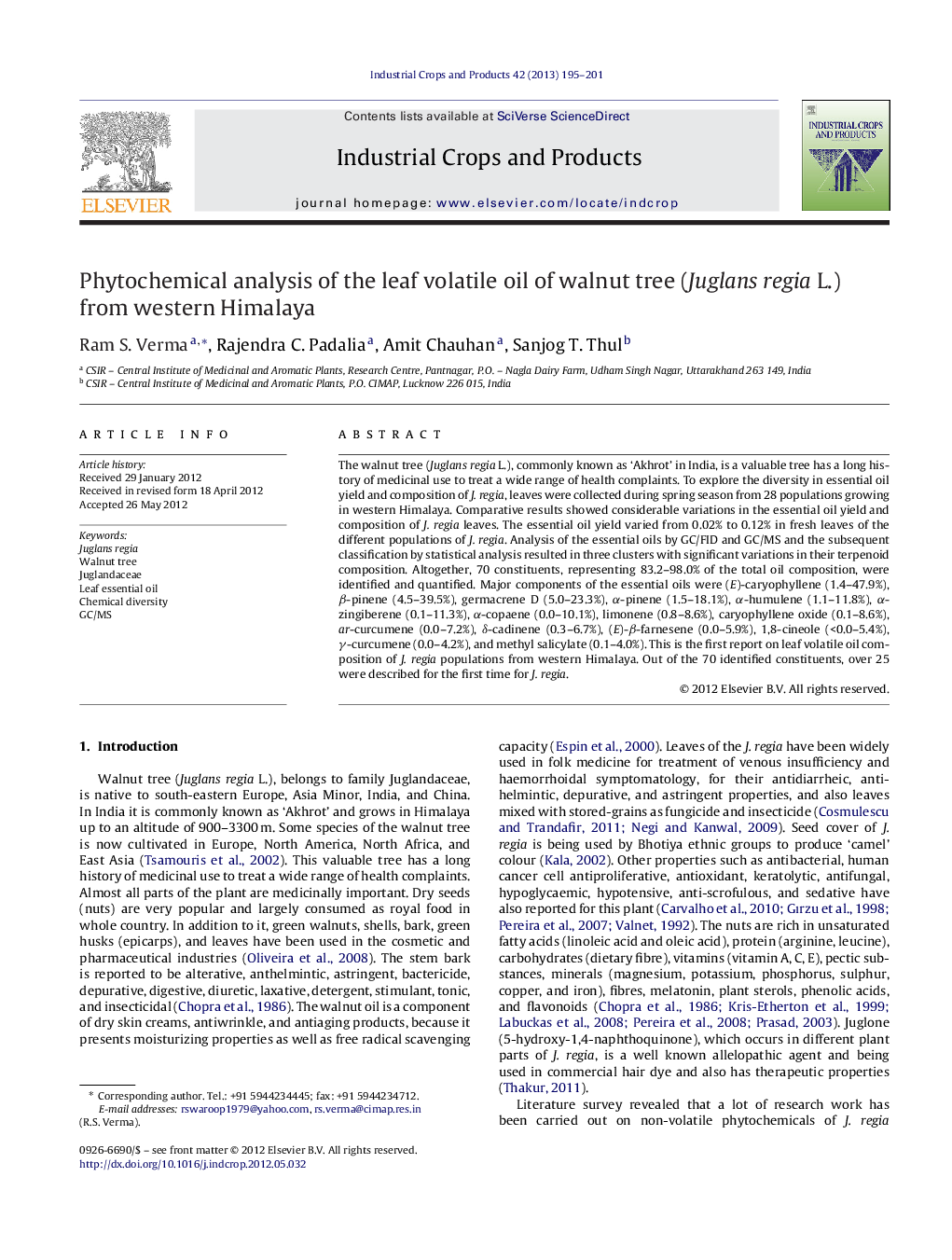| Article ID | Journal | Published Year | Pages | File Type |
|---|---|---|---|---|
| 4513734 | Industrial Crops and Products | 2013 | 7 Pages |
The walnut tree (Juglans regia L.), commonly known as ‘Akhrot’ in India, is a valuable tree has a long history of medicinal use to treat a wide range of health complaints. To explore the diversity in essential oil yield and composition of J. regia, leaves were collected during spring season from 28 populations growing in western Himalaya. Comparative results showed considerable variations in the essential oil yield and composition of J. regia leaves. The essential oil yield varied from 0.02% to 0.12% in fresh leaves of the different populations of J. regia. Analysis of the essential oils by GC/FID and GC/MS and the subsequent classification by statistical analysis resulted in three clusters with significant variations in their terpenoid composition. Altogether, 70 constituents, representing 83.2–98.0% of the total oil composition, were identified and quantified. Major components of the essential oils were (E)-caryophyllene (1.4–47.9%), β-pinene (4.5–39.5%), germacrene D (5.0–23.3%), α-pinene (1.5–18.1%), α-humulene (1.1–11.8%), α-zingiberene (0.1–11.3%), α-copaene (0.0–10.1%), limonene (0.8–8.6%), caryophyllene oxide (0.1–8.6%), ar-curcumene (0.0–7.2%), δ-cadinene (0.3–6.7%), (E)-β-farnesene (0.0–5.9%), 1,8-cineole (<0.0–5.4%), γ-curcumene (0.0–4.2%), and methyl salicylate (0.1–4.0%). This is the first report on leaf volatile oil composition of J. regia populations from western Himalaya. Out of the 70 identified constituents, over 25 were described for the first time for J. regia.
Graphical abstract.Figure optionsDownload full-size imageDownload as PowerPoint slideHighlights► Diversity in leaf volatile oil of Indian walnut (Juglans regia) has been assessed. ► Leaves were collected from 28 locations from western Himalaya. ► GC/MS and statistical analyses resulted in three clusters with significant variation. ► Essential oil yield varied from 0.02% to 0.12% in fresh leaves. ► Chemotypes belong to cluster ‘I’ and ‘II’ explored for the first time.
